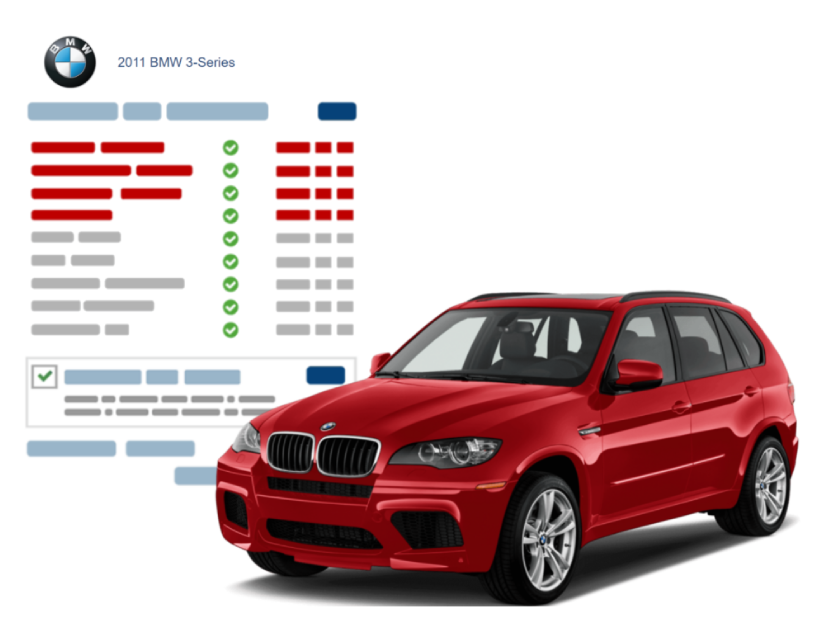
Buying a used car is a decision often driven by emotions, calculations—and plenty of unanswered questions. Has the car ever been in an accident? Has the odometer been tampered with? What about hidden repairs or long-forgotten damage?
To answer these questions, more and more buyers turn to vehicle history reports. But few people stop to consider where all that information actually comes from.
As it turns out, a car’s history begins long before it hits the road for the first time.
1. Registration – The Official Beginning
Every vehicle’s story begins at registration. After leaving the factory and being sold by a dealer, a car is entered into an official registry. It’s assigned a license plate number and uniquely identified by its Vehicle Identification Number (VIN). Key information entered at this stage may include:
- make and model,
- year of manufacture,
- fuel type,
- vehicle weight,
- number of seats,
- engine number (if applicable).
This marks the beginning of a digital trail that will continue to grow throughout the vehicle’s life.
2. Inspections – Regular Updates to the Vehicle’s Health Record
Mandatory technical inspections are more than just a safety check. They also update a car’s “health record” with details like:
- date of the inspection,
- mileage reading,
- test result (pass or fail),
- any noted defects.
In many countries, these records are stored in central databases. They often follow the vehicle across borders—especially if the car is sold or registered in another country—allowing for international verification of mileage and condition.
3. Accidents and Damage – Often Invisible to the Eye
Minor bumps, major crashes, or parking scrapes—accidents happen. When an insurance claim is filed, documentation is generated, which may include:
- type of damage (e.g. front bumper, rollover, flood),
- repair estimates,
- repair decisions or total loss declarations,
- sometimes even photos of the damage.
It’s important to remember that a flawless exterior doesn’t guarantee a clean history. Skilled repairs can mask past damage—but not erase it from the record.
4. Repairs and Servicing – A Footprint of Every Workshop Visit
More and more service centers are using digital systems that log every visit. These entries can include:
- repair date,
- mileage at the time of service,
- type of work performed (e.g. oil change, timing belt replacement),
- diagnostic recommendations.
Authorized service centers often share this data with manufacturers, making it available in official vehicle history reports. For buyers, this reveals whether the car has been maintained properly—or driven into the ground.
5. Ownership Changes, Imports, and Exports
Each change in ownership—even within a family—typically leaves a trace. The same goes for import and export events.
Such data can reveal:
- how many times the car has changed hands,
- whether it was imported (possibly requiring mileage conversion from miles to kilometers or vice versa),
- if it was used in a fleet, as a lease vehicle, or as a taxi.
All of this helps paint a picture of how the vehicle was used and how intensively it was driven.
6. Theft Reports and Legal Status
Cars can be listed in national or international databases as stolen or sought by authorities. In addition, financial institutions may register legal claims if a car is used as loan collateral.
However, the absence of public alerts doesn’t always mean a car is “clean.” Many buyers now rely on independent vehicle history checks to confirm legal status and avoid costly mistakes.
7. End of Life – Deregistration and Scrapping
At the end of its road life, a car is de-registered and sent to a scrapping facility. These events are also recorded.
In some countries, however, scrapped vehicles are illegally repaired and reintroduced into the market—often without the buyer’s knowledge. That’s why scrapping history is a red flag worth investigating, especially when buying a used car from abroad.
8. Why Vehicle History Reports Matter
When you buy a used car, you’re not just buying a machine—you’re buying its story. And that story might include:
- past accidents,
- odometer fraud,
- theft reports,
- rental or fleet use,
- poor maintenance,
- cross-border imports,
- legal issues.
Fortunately, many of these risks can be identified through vehicle history reports. Services like Automoli.com provide access to local and international data sources, helping you assess a vehicle’s background before you commit.
Conclusion: A Car’s History Is More Than Just a Number
Checking a used car is about more than just mileage. A vehicle’s full story includes registration, inspection, insurance, repair, and ownership records. The more you know about that history, the better your chances of making a smart, safe purchase—and avoiding costly surprises down the road.







